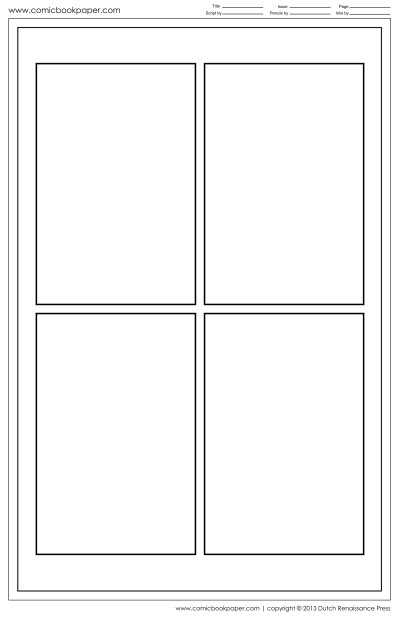Types of Panel To Panel Transitioning
Before I begin the first installment of the two-part article about panel to panel transitioning in comic books, I would like to give thanks to Scott McCloud. Without his work in his novel Understanding Comics The Invisible Art, I would never have been as encouraged to write about comic books as I am today. The different types of panel to panel transitions mentioned in this article can be found and explained in his book. Well, shall we start?
Types of Panel To Panel Transitioning
Moment-to-Moment
Using this type requires minimal interpretation by the reader as it uses illustrative means of showing a small change in time between panels. It portrays an almost cinematic feel in the sense that it shows very little visual change. An example of what a moment-to-moment transition would look like is illustrating the Mona Lisa. Her eyes are open and seem to have an expressionless look on her face. On the next panel, she has her eyes closed and smiling.
Action-to-Action
This panel to panel transition is used to show a single subject progressing though an action. One example would be two panels, the first showing a soccer player approaching a soccer ball, the second showing him passing it towards his teammate.
Like the article so far? Support the production of more articles like this one!
Subject-to-Subject
This type requires increased involvement from the reader in order to interpret the story being told. This is done while still keeping the reader within the same scene or idea. This can be portrayed with an example like that of two panels: one showing a gun going off and the next panel showing race cars speeding down the tracks.
Scene-to-Scene
This particular method of transitioning between panels requires a degree of deductive reasoning. This method is used to send the reader across significant distances of either time or space, or both. An example of this could be used to show two panels: the first have two people expressing how glad they are to finally be alone to talk, while in the second you can see that they are being monitored via cameras by a shrouded individual.
Aspect-to-Aspect
This type of transition mostly disregards time in exchange for a wandering perception of a place, idea or mood. This could be presented with a series of panels showing people at a beach, the sun shining bright on the water, waves or people having ice cream on towels.
Non-Sequitur
In this case, two panels could be interpreted to have no logical relationship at all. Yes, I know this sounds very strange. To be fair, Scott McCloud would argue that simply because these two panels are presented in sequence, the intent the creator had to make the two panels unrelated would be insignificant. The reader would still find some kind of connection. An example of a non sequitur would be of two panels: the first an illustration of fork on a plate of food, and the second being of rain falling in the grand canyon.
In the next article, we will be discussing how these panel-to-panel transitions are traditionally used differently in varying comic book mediums. These mediums will be separated by either Western or Eastern styles.
Sign Up For
The Unknown Times!
Content Updates
Website News
Recommended Reading
And More to Come!
*Once every two weeks!*
Liked the article? Become part of my Patreon Community!
About The Author

Phillip Allen
Writer, Editor, and Founder of Unknown Comics
Hello there! My name is Phillip Allen and I'm the writer, editor, and founder of Unknown Comics. I am an aspiring comic book creator. In an attempt to learn how to create my own comic I came to learn just how few reliable resources existed out there. From a few books and unhelpful websites I decided to focus my attention on researching and writing a resource for both myself and the rest of the comic creating industry. This website and and its content is the result of all of that hard work.

